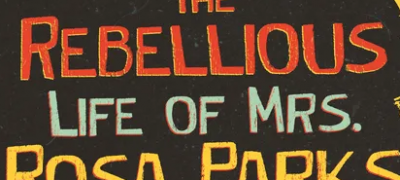Rebel Women: Past, Present, and Future

All Global Research articles can be read in 51 languages by activating the “Translate Website” drop down menu on the top banner of our home page (Desktop version).
Visit and follow us on Instagram at @crg_globalresearch.
***
Naomi Osaka initially garnered global acclaim as a tennis champion. Today she is a rebel. Thank you, Naomi.
Seeing how she defied the norm regarding participation in press conferences, the public gained a strikingly different perception of Ms. Osaka. Ultimately this athlete’s dissidence may be her most remembered and influential victory.
Riotous, rebellious, defiant; warriors, insurgents, dissidents, sirens, pioneers, innovators:– women and girls who simply will not accept the norms set for them are growing in number, historically and currently (thanks to awakened, skillful researchers).
“I expect something else (other than what you defined for me)”, girls insist. When we realize our dreams for ourselves, inevitably we widen paths for others. We redefine standards, as Osaka’s refusal is surely doing. Let’s also redefine these women as ‘rebels’ since this word symbolizes the insight, the fight and the burden that change calls for.
Rebel girls were once wearisome, impractical or suspect annoyances. In recent years they became reimagined and popularized as heroes. In the West, this transformation could be traced to its modern feminist movement. In 2016 a dynamic perception of ‘rebel’ was introduced in a children’s picture book chockfull of women stories. Goodnight Stories for Rebel Girls is the creation of pioneer editors Elena Favilli and Francesca Cavallo whose first edition featured not one but a hundred accomplished women from various places and times. Its first edition sold millions and was translated into many languages. New editions, spinoffs and imitations followed.
In the Goodnight Stories portraits, rebellion is not characterized by military figures like Joan of Arc, Maoist guerrillas or African warrior queens. This history highlights scientists, political activists, artists, athletes, and pilots. Significantly, its ‘rebel girl’ is as much the child reader as those accomplished ladies on its pages. These selected ‘goodnight stories’ are for girls’ night-(and day)-time dreams.

The book’s extraordinary impact is surely due to it being far more than a few page-long biographies; Goodnight Stories actually offers an alternative history of humankind. This isn’t a story of one woman in a news feature, nor an empress, i.e., an exception. Here is a whole race:— accomplished women from across many centuries and diverse cultures. Their personalities and achievements retell the history of civilization. They offer child readers a new vision of human potential– a host of models, a myriad of ways that youngsters might consider their lives. It rewrites history, and it redefines ‘rebel’.
This collection may also affect how writers, anthropologists and historians reframe their accounts of women, as evidenced in titles of recent biographies. Take for example The Rebellious Life of Mrs. Rosa Parks (2021) where authors Jeanne Theoharis and Brandy Colbert examine Parks’ six decades of activism. They challenge earlier perceptions of her as an ‘accidental’ actor in the American Civil Rights Movement. To young people, ‘rebellious life’ might more poignantly characterize that extraordinary career and demonstrate how Park’s contribution was not a single event but an unrelenting campaign. Any women’s ascent needs to be understood as a sustained struggle against obstacles she confronted, perhaps personally, from childhood, certainly within patriarchal society, and against prevailing cultural norms.
We find rebel celebration in Wake, a new collection, also designed for young readers. In “Wake: The Hidden History of Women-Led Slave Revolts” author Rebecca Hall defines her subjects, Black women who fought against their enslavers, as warriors. (Only rebels could manage what they did.) This book is moreover written to reclaim a once-secret history. (Black slave revolts by men are fairly well documented, not those led by women.) So, in addition to recording warrior biographies, Wake challenges cover-ups, an insidious all-too-common process that means the pursuit of rebel women’s histories has to address flawed historiography. Our work on rebellious lives frequently involves recognizing and exposing history’s secrets. (Also see Wayward Lives, Beautiful Experiments.)
When I first undertook to record the suppressed careers of two Nepali women Yogmaya Neupane and Durga Devi, both early 20th century rebels, I faced two challenges: I had to rely on oral accounts from a fading source—a community of elderly ascetics living in a hermitage, women dismissed by others as ‘unauthoritative’; then references to both rebels were essentially erased within a few decades of their deaths. Nepal’s ruler imposed a strict ban on Yogmaya and her surviving followers, suppressing any record of her work. While Durga Devi was made ‘forgotten’ by angry male adversaries after her relentless career of shaming them, first in a (successful) fight for her property rights, then exposing their corruption.
As I uncovered these women’s careers, it became clear how their sheer determination to resist, as we find with Osaka, often necessitates some degree of rebellion.
Similarly, women like the talented Pakistani vocalists recorded in Fawzia Afzal-Khan’s Siren Song needed supreme efforts to persist in the face of personal threats and marginalization in order to protect and foster a rich music tradition. Afzal-Khan’s account of the careers of Malka Pukhraj, Roshanara Begum, and Reshma is a rich biography; it also illustrates multiple ways women performers negotiate around challenges thrown in their path by political turmoil and by standard societal demands. We may not think of musicians as rebels, but Afzal- Khan’s sirens are just that, as are some of America’s great Black vocalists, e.g. Nina Simone and Marvin Gaye.
*
Note to readers: Please click the share buttons above or below. Follow us on Instagram, @crg_globalresearch. Forward this article to your email lists. Crosspost on your blog site, internet forums. etc.
This article was originally published on the author’s blog site, Barbara Nimri Aziz.
BN Aziz whose anthropological research has focused on the peoples of the Himalayas is the author of the newly published “Yogmaya and Durga Devi: Rebel Women of Nepal”, available on Amazon.
All images in this article are from the author

